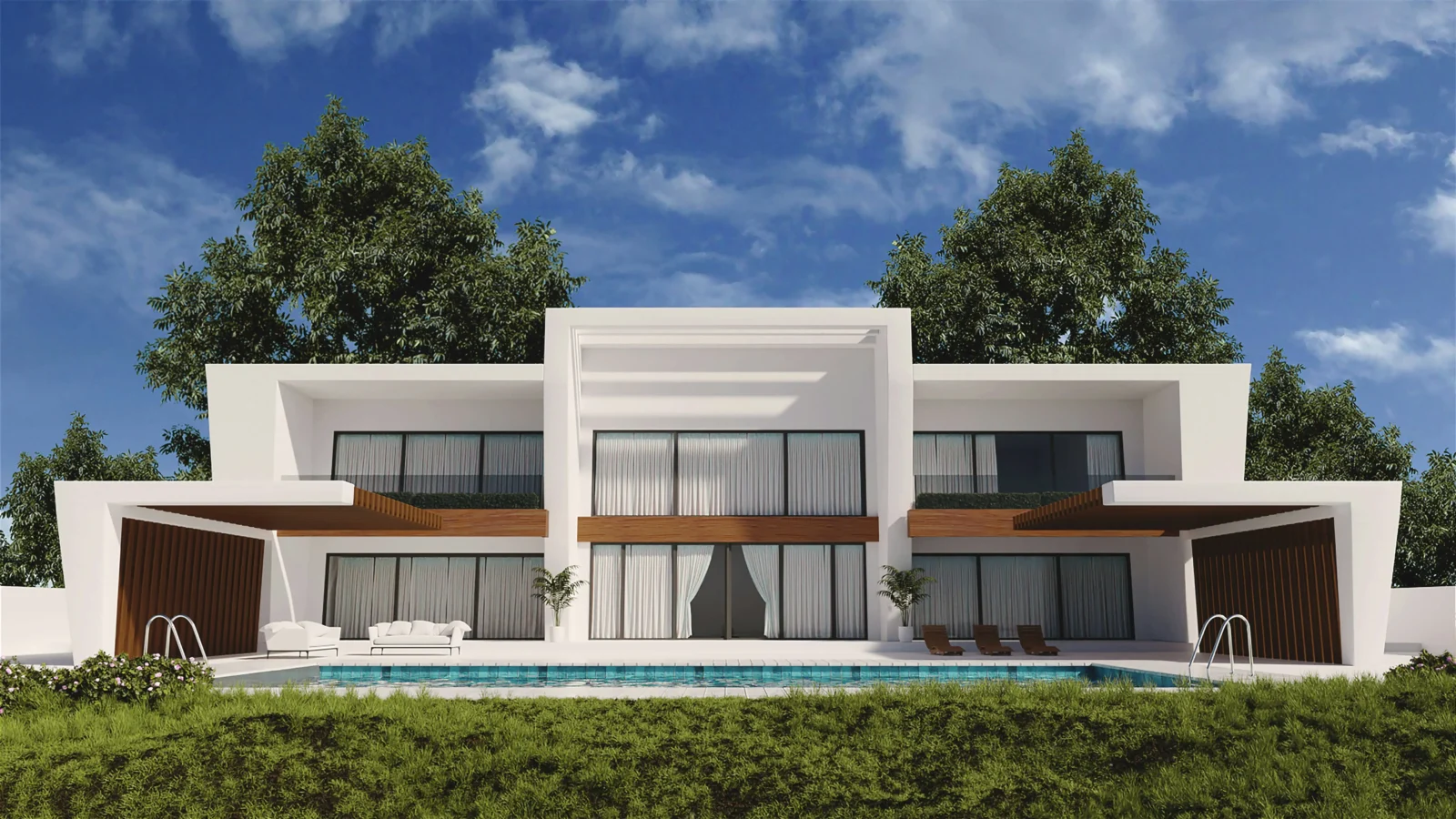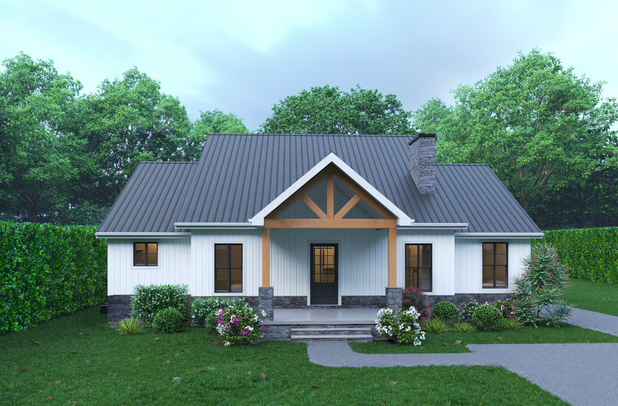- Home
- Articles
- Architectural Portfolio
- Architectral Presentation
- Inspirational Stories
- Architecture News
- Visualization
- BIM Industry
- Facade Design
- Parametric Design
- Career
- Landscape Architecture
- Construction
- Artificial Intelligence
- Sketching
- Design Softwares
- Diagrams
- Writing
- Architectural Tips
- Sustainability
- Courses
- Concept
- Technology
- History & Heritage
- Future of Architecture
- Guides & How-To
- Art & Culture
- Projects
- Interior Design
- Competitions
- Jobs
- Store
- Tools
- More
- Home
- Articles
- Architectural Portfolio
- Architectral Presentation
- Inspirational Stories
- Architecture News
- Visualization
- BIM Industry
- Facade Design
- Parametric Design
- Career
- Landscape Architecture
- Construction
- Artificial Intelligence
- Sketching
- Design Softwares
- Diagrams
- Writing
- Architectural Tips
- Sustainability
- Courses
- Concept
- Technology
- History & Heritage
- Future of Architecture
- Guides & How-To
- Art & Culture
- Projects
- Interior Design
- Competitions
- Jobs
- Store
- Tools
- More
Top Architectural Rendering Engines & New Trends
Discover the latest trends in architectural rendering engines, focusing on real-time visualization's transformative power in improving collaboration and communication. This article delves into how AI, ML, VR, and AR are redefining immersive client experiences, pushing the boundaries between virtual and physical realms, and driving efficiency and creativity in design processes.

In the ever-evolving world of architectural design, the quest for the perfect rendering engine is relentless. As we dive into the latest trends, it’s clear that the fusion of technology and creativity is pushing boundaries like never before. With tools like Cinema 4D and Lumion leading the charge, designers are now empowered to breathe life into their architectural dreams in ways that were once unimaginable. These platforms not only offer robust modeling tools and cutting-edge rendering technologies but also an intuitive workflow that caters to both seasoned designers and novices alike.
As we explore the new trends in rendering, it’s essential to understand that the best architectural rendering engine is one that aligns with your specific needs, preferences, and workflow. From capturing the delicate dance of light and shadow to creating immersive virtual walkthroughs, these engines are transforming static models into captivating narratives. Join us as we delve into the heart of architectural visualization, where technical prowess meets creative exploration, and discover how these advancements are reshaping the landscape of design.

Table of Contents
ToggleThe Evolution of Architectural Rendering
The journey of architectural rendering has been a remarkable voyage from the rudimentary sketches of old to the hyper-realistic visualizations of today. Let’s delve into how this evolution has unfolded and what it means for the future of architectural design.
From Traditional Methods to Advanced Engines
Traditionally, architectural rendering was a manual process, relying on hand-drawn sketches and physical models to convey an architect’s vision. These methods, while full of charm, posed significant limitations in flexibility and detail, often leaving much to the imagination.
Fast forward to today, we’ve witnessed a dramatic shift towards digital tools and advanced rendering engines, such as Cinema 4D and Lumion. These platforms have empowered architects and designers to bring their ideas to life with stunning accuracy and depth. The level of detail that can now be achieved in textures, lighting, and environments is nothing short of breathtaking. Furthermore, the advent of these engines has revolutionized the way architects interact with their designs, allowing for iterative experimentation in a way that was previously unimaginable.
The Shift to Real-Time Rendering and Visualization
Perhaps one of the most transformative trends in architectural rendering is the shift towards real-time rendering and visualization. This approach enables designers to generate highly detailed and interactive visualizations in seconds, a process that used to take hours or even days with traditional rendering methods.
Real-time rendering engines like Lumion have not only accelerated the design process but have also enhanced the collaborative dynamic between architects, clients, and stakeholders. By viewing and tweaking designs in real time, all parties can more effectively communicate and align on the architectural vision. This immediacy also allows for more dynamic presentations, where changes can be made on the fly to suit client feedback or to explore new ideas during meetings.
Moreover, the integration of real-time visualization into virtual and augmented reality platforms has opened up new frontiers in architectural presentation and client engagement. Being able to walk through a virtual model of a building before a single brick is laid is a game-changer for the industry. It ensures a higher level of accuracy in the final construction and a deeper connection to the project for both clients and designers.
As we look forward, it’s clear that the evolution of architectural rendering is far from over. The continuous advancement in rendering engine technology promises to further blur the lines between virtual and physical worlds, providing even more tools for architects to express their creativity and technical skill. We’re excited to see where these innovations will take us next in the realm of architectural visualization.

Key Architectural Rendering Engines and Their Impact
Exploring Non-Branded Game-Changer Technologies
In our exploration of the latest trends in architectural rendering, we’ve encountered several non-branded technologies that are revolutionizing the field. These game-changers offer architects and designers unprecedented capabilities in creating immersive, realistic visualizations. Unlike traditional rendering engines, these non-branded tools focus on leveraging real-time rendering technology, allowing for immediate visual feedback and interactive design exploration. This shift enables more fluid and dynamic project development, encouraging experimentation with lighting, textures, and materials without the time-consuming rendering processes of the past.
Real-time visualization, powered by advanced computing power and graphic processing units (GPUs), such as the NVIDIA GeForce RTX or Quadro series, has significantly reduced the gap between concept and reality. These technologies support a wide array of popular rendering software, including Autodesk 3ds Max, Cinema 4D, and Blender, ensuring seamless integration into existing workflows. The impact of these non-branded game-changer technologies is profound, offering architects the tools to bring their visions to life with greater accuracy and speed than ever before.
Criteria for Choosing the Best Rendering Engine
Selecting the best rendering engine for architectural projects involves several key considerations. First and foremost, compatibility with industry-standard software is paramount. A rendering engine that integrates smoothly with tools like Autodesk 3ds Max, Cinema 4D, or Blender streamlines the design process, facilitating a seamless transition from modeling to rendering. Our experience confirms that engines supporting a wide range of software tend to foster more efficient workflows, allowing designers to focus on creativity rather than technical hurdles.
Performance is another critical criterion. The best rendering engines are those that can handle complex scenes with ease, delivering high-quality images without compromising speed. This is where dedicated GPUs, such as the NVIDIA GeForce RTX or Quadro series, play a crucial role. They provide the necessary computational power to process large amounts of data, ensuring that rendering times are kept to a minimum while maintaining impeccable detail and realism.
Lastly, ease of use significantly impacts a rendering engine’s suitability for architectural visualization. Engines that offer intuitive interfaces and straightforward processes make it easier for architects and designers to achieve their desired outcomes. Additionally, a robust community of users and accessible learning resources can greatly enhance the user experience, offering support and inspiration.
The impact of choosing the right rendering engine cannot be overstated. It not only influences the efficiency of the design process but also the quality and expressiveness of the final architectural visualization. As such, careful consideration of these criteria ensures that architects and designers can fully harness the potential of their rendering software, propelling their projects to new heights with breathtaking visualizations.

Embracing Next-Gen Technologies in Rendering
The dynamic landscape of architectural rendering constantly evolves, incorporating groundbreaking technologies that revolutionize how architects visualize and communicate their designs. Two of the most transformative next-gen technologies reshaping the rendering domain are Artificial Intelligence (AI) and Machine Learning (ML), alongside the integration of Virtual Reality (VR) and Augmented Reality (AR). These advancements offer unparalleled precision, efficiency, and immersion in architectural visualization, marking a pivotal shift in the industry’s future.
The Role of AI and Machine Learning
AI and ML are at the forefront of rendering technology innovation, enhancing the capability to produce photorealistic images with astonishing accuracy and speed. These technologies automate repetitive and time-consuming tasks, allowing architects and designers to focus more on the creative aspects of design. AI algorithms optimize rendering processes, predicting and adjusting lighting, textures, and materials in real-time. This results in significantly reduced rendering times and the ability to iterate designs more rapidly.
Machine Learning, in particular, is instrumental in refining the rendering outputs based on user preferences and feedback. It learns from past renderings to improve future projects, ensuring each output is closer to the designer’s intent. Additionally, AI-driven tools assist in generating complex scenes involving natural elements and landscapes with lifelike accuracy, which would otherwise require exhaustive manual effort.
Integrating VR and AR for Immersive Experiences
The integration of VR and AR technologies takes architectural rendering into a new dimension, offering immersive experiences that were once the realm of science fiction. VR enables architects and clients to navigate a 3D model as if they were walking through the actual building. This immersive exploration aids in making informed design decisions and identifying potential issues early in the design process.
AR, on the other hand, bridges the gap between digital models and the physical world. By overlaying digital renderings onto real-world environments, AR allows architects and clients to visualize how a new structure will appear in its intended location. This is particularly valuable during client presentations and stakeholder meetings, making it easier to convey the vision and scale of a project.
Moreover, the combination of VR and AR with real-time rendering opens up opportunities for collaborative design. Teams can work together in a virtual space, making changes to the model in real time that are immediately visible to all participants, regardless of their physical location. This seamless collaboration accelerates the design process and enhances the overall quality of the final architectural product.
In embracing these next-gen technologies, we’re not just enhancing our rendering capabilities — we’re redefining the boundaries of architectural visualization. As we continue to explore and integrate AI, ML, VR, and AR into our workflows, the future of rendering looks brighter and more immersive than ever, promising a new era of creativity and innovation in architecture.

Current Trends Shaping Architectural Rendering
The Surge of Photorealism in Visualizations
In the realm of architectural rendering, the push towards photorealism represents a monumental shift. This trend not merely aims for visual accuracy but seeks to evoke a tangible sense of presence within digital constructs. Advances in rendering softwares, such as the notable Cinema 4D and Lumion, have equipped architects and designers with the capability to produce images and animations that are nearly indistinguishable from real life. The essence of photorealism lies in its meticulous attention to detail, from the subtle play of light and shadow to the intricate textures of materials. These advancements have fundamentally transformed the conventional approach to architectural presentations, enabling stakeholders to experience spaces with an unprecedented level of realism. The immersive quality of photorealistic visuals ensures that clients and architects alike can explore and evaluate design proposals in a context that simulates their eventual physical manifestation, facilitating clearer communication and more informed decisions.
Sustainable and Eco-Friendly Design Visuals
Concurrently, the architectural rendering landscape is embracing the imperative of sustainability. This trend extends beyond the integration of green technologies and materials in designs to include the visualization of these elements within the rendering process. Tools that support sustainable and eco-friendly design visuals enable architects to demonstrate the environmental aspects of their projects. They can convincingly illustrate how buildings interact with their surroundings, manage resources, and reduce carbon footprints. The visualization of energy flows, natural ventilation, and solar gain, for instance, becomes a powerful narrative tool that aligns with the broader societal push for environmental responsibility. Architects now have at their disposal rendering technologies that make it possible to present not just how projects will look, but how they will live and breathe within the context of sustainable design principles. Thus, rendering becomes a bridge between innovative architectural designs and the imperative for a more sustainable future, offering a vivid portrayal of eco-friendly living spaces that inspire and motivate all stakeholders involved in a project.

Challenges and Opportunities in Architectural Rendering
Balancing Quality with Efficiency
In the realm of architectural rendering, the quest to achieve photorealism while maintaining efficient workflow poses a significant challenge. High-quality renderings empower architects and designers to communicate their visions effectively, yet the complexity and resource intensity of achieving such detail can strain timelines and budgets. Advanced rendering software has made significant strides in reducing rendering times through optimizations and leveraging high-performance computing resources. However, balancing the meticulous demands for detail with the need for swift project turnarounds remains a pivotal concern.
Resource intensity, particularly for large-scale or complex architecture projects, necessitates substantial computing power, often making it a costly affair for smaller firms or independent architects. Ensuring access to the necessary technology without compromising financial viability is crucial. Strategies include optimizing models and textures for rendering, selecting software that offers the best balance of speed and quality, and embracing cloud rendering solutions to scale computing resources as needed.
Enhancing Collaboration with Latest Rendering Solutions
In the dynamic world of architectural rendering, the significance of collaboration cannot be overstated. As we journey through the advances in rendering technology, it becomes clear how these innovations are reshaping the way architects, designers, and clients converge and collaborate. In this context, two pivotal aspects stand out: cross-platform workflows and parametric and generative design tools. These components are not just altering the landscape of architectural visualization but are also setting new benchmarks for efficiency, creativity, and teamwork.
Cross-Platform Workflows for Teams Worldwide
The advent of cross-platform workflows has revolutionized the architectural rendering and design industry by fostering unparalleled collaboration. These workflows ensure that teams spread across different geographic locations can work together seamlessly, without the constraints of incompatible software or hardware. By leveraging the latest rendering solutions, such as cloud-based platforms and universally compatible rendering engines, architectural firms can ensure everyone, from designers to stakeholders, is on the same page, regardless of their physical location.
This interconnectedness also facilitates real-time feedback and iterative design processes, enabling decisions to be made swiftly and efficiently. Such advancements optimize project timelines and enhance the quality of the final architectural products. Moreover, they allow for a more dynamic exchange of ideas, enriching the design process with diverse perspectives and making it more inclusive.

Parametric and Generative Design Tools
Parametric and generative design tools represent another leap forward in architectural rendering, driving both innovation and collaboration. These tools automate and optimize various aspects of the design process, from the initial conceptualization to the detailing phases, by using complex algorithms and data-driven processes. For architects, this means the ability to quickly explore a vast array of design options and variations, all while adhering to specified constraints and parameters.
Moreover, these design tools encourage collaboration between architects and engineers by facilitating a more fluid exchange of information. Parametric models can adjust automatically to changes, ensuring all team members have access to the most current version of the project. This level of synchronization not only saves time but also reduces the potential for errors, leading to a smoother project development process.
In embracing parametric and generative design tools, architectural firms not only enhance their capabilities in creating more innovative and customized solutions for their clients but also position themselves at the forefront of technological advancements in the industry. These tools, combined with cross-platform workflows, encapsulate the future of architectural rendering—where collaboration, efficiency, and creativity intersect to produce groundbreaking architectural narratives.

Conclusion
In the dynamic world of architectural rendering, the fusion of technology and creativity continues to push boundaries and redefine industry standards. As we witness the integration of real-time visualization, AI, ML, VR, and AR into our workflows, it’s clear that these innovations are not merely trends but foundational elements that will shape the future of architectural design and presentation. The move towards photorealism, immersive experiences, and sustainable design visuals highlights a broader shift towards more engaging, efficient, and environmentally conscious architectural practices.
The embrace of cross-platform workflows and parametric and generative design tools illustrates our commitment to harnessing technology for enhanced collaboration and creativity. These tools not only streamline the design process but also facilitate a seamless integration of various expertise, ensuring comprehensive solutions that address both aesthetic and functional demands. Our ability to adapt and incorporate these advancements positions us at the vanguard of architectural innovation, where we can better meet our clients’ needs and lead the way in sustainable and impactful architectural development.
Looking forward, the architectural rendering industry must continue to invest in technology and training, recognizing these as pivotal to staying competitive and fulfilling the evolving desires of our clients. Our emphasis on collaboration, powered by next-gen technologies, not only accelerates design processes but also enriches the architectural narrative, offering stories that resonate more deeply with our audiences. As we delve deeper into the realms of virtual and augmented reality, we’re crafting spaces that transcend traditional boundaries, inviting both clients and the wider community to engage with architecture in novel and meaningful ways.
1 Comment
Submit your architectural projects
Follow these steps for submission your project. Submission FormLatest Posts
Top 3D Visualization Outsourcing Picks for 2025
Looking to scale your 3D production without expanding headcount or software spend?...
Architectural Visualization in Motion: When a Still Image Isn’t Enough
High-resolution stills have long been the standard in architectural presentation, but today’s...
Visualizing the Invisible: How 3D Rendering Revolutionizes Basement Waterproofing Design
The architectural visualization revolution has transformed how designers approach complex building challenges,...
Mastering Atmosphere: How Lighting Transforms Architectural Visuals
When an architectural rendering falls flat, the issue often isn’t the design—it’s...












Very helpful article 🙂